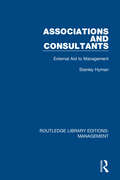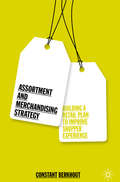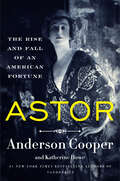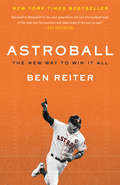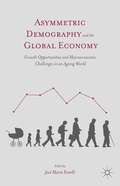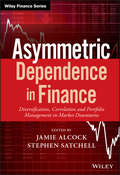- Table View
- List View
Assistant Professor Graham and Ms. Macomber (A)
by C. Roland ChristensenA student takes a position on a case which is in conflict with the other students' conclusions. The professor believes the student's answer is correct but does not indicate so in class. As a result, the student withdraws from further class participation.
Assistant Professor Gyan Gupta and the Wet Noodle Class (A)
by Dorothy Leonard Susan S. HarmelingProfessor Gupta faces three major problems in teaching cases: 1) his students, accustomed to lectures, don't know how to conduct a case discussion; 2) the students are using the Internet to discover the outcome of managerial dilemmas posed in the case; 3) he wants to share the theory he learned as a doctoral student, but can't figure out the appropriate way to integrate theory into the case-based discussion. He seeks advice, particularly about the students' use of the Internet.
Assistierter Suizid – Assistenz als ärztliche Aufgabe: Rechtsfragen nach der Entscheidung des Bundesverfassungsgerichts vom 26.02.2020 (BestMasters)
by Melanie Ellen IrmenDer Suizid stellt nicht nur a priori ein philosophisches, sondern auch ein rechtliches, ethisches, medizinisches sowie theologisches, polydimensionales Problem mit Auswirkungen auf die Tätigkeit als Arzt/Ärztin dar. Mit der Rechtsprechung des Bundesverfassungsgerichts vom 26.02.2020 kam es zu einem Paradigmenwechsel hin zur Stärkung des individuellen Selbstbestimmungsrechts. Damit fällt unter die Privatautonomie, das eigene Sterben selbst zu bestimmen – auch durch einen assistierten Suizid. In der Zukunft könnte der Arzt/die Ärztin in der Beschaffung von letalen Medikamenten oder bei Beratungen eine tragende Rolle spielen. Nur wie sehen die rechtlichen Gegebenheiten aus? Gibt es einen rechtsfreien Raum? Welche Aufgabe kommt dabei den Ärzten zu und treten Widersprüche auf? Welche Problematik besteht im Hinblick auf die Eruierung der Einwilligungs- und Urteilsfähigkeit des Suizidwilligen durch künstliche Intelligenz oder einen Psychiater/einer Psychiaterin? Mit der wissenschaftlichen Ausarbeitung soll ein Beitrag geleistet werden, dass das Thema die Würdigung erhält, welche es verdient.
Associacao Saude Crianca: Trying to Break the Cycle of Poverty and Illness at Scale
by Julie Battilana Johanna Mair Priscilla Zogbi Marissa KimseyDr. Vera Cordeiro founded the NGO Associa o Sa de Crian a in 1991 to try to help poor families break the cycle of poverty and illness in Brazil. She and her team of employees and volunteers developed a holistic methodology to address the multidimensional sources of poverty based on the pillars of health, housing, citizenship, income, and education. After introducing the seeds of this approach, the case examines the evolution of the organization's attempts to grow its social impact in Brazil and beyond-including a loose network of sister organizations, social franchising, licensing agreements, and government adoption.
Associated Labor and Production in the Age of Barbarism: Education Beyond Capital
by Henrique Tahan NovaesThe book focuses on different practices of associated labor in Brazil and Argentina, in the case of the workers’ recuperated factories, over the past 40 years. Novaes analyses labor practices from a critical Marxist perspective as a reaction to the misery of neoliberalism. Deindustrialization, austerity programs, increasing commodification and international competitiveness have severely deteriorated the living and working conditions of the majority of Latin Americans. However, alternative labor, production and educational practices have developed in this increasingly ruthless neoliberal capitalism. Although they are still small, they indicate a potential way out of the capitalist mode of production. Novaes directs his special attention to the “education beyond capital,” which has accompanied these alternative labor and production practices (from alternative job training in recuperated companies and the movement of landless rural workers MST).
Association Island
by Schenectady Museum Timothy W. LakeMost people believe the General Electric retreat at Association Island was organized by GE. In reality, it was originally formed by several businessmen from the incandescent lamp industry; these men formed an association of lamp companies to compete with GE. A 1903 fishing trip to Henderson Harbor inspired them to purchase the island for their summer sojourns; however, ownership of the association and the island were eventually absorbed by GE, turning it into a full-scale resort for executives and managers of the ever-expanding corporation. Hotels, restaurants, garages, boats, fishing guides, managers, and maintenance workers from nearby Henderson Harbor were all tied to Association Island for the next 50 years. When GE gave it away, Association Island fell into a long and steady period of decline until it was turned into a camping resort for the 21st century. Association Island illustrates the financial and social impact of a significant corporation on a small fishing community.
Associations and Consultants: External Aid to Management (Routledge Library Editions: Management #35)
by Stanley HymanOriginally published in 1970. Trade associations and consultants in their many varieties are arguably the most important of our economic organisations. The people that manage those organisations are among the most influential members of modern society. The research reported in this book constitutes one of the first attempts to obtain systematic knowledge about the process of helping management. This title will be of interest to students of business, management, and economics, as well as policy-makers concerned with external aids in government, associations, and firms.
Associations and the Chinese State: Contested Spaces
by Jonathan UngerWhat role do Chinese popular associations play in the expansion of civil society and democratization? Under Mao few associations were permitted to exist, while today over 200,000 associations are officially recognized. Are they important foundations of civil society, or vehicles for state corporatism and control? In this book leading China specialists examine an interesting range of associations, from business associations to trade unions, to urban homeowners associations, women's groups against domestic violence, and rural NGOs that develop anti-poverty programs. The contributors find different important trends underway in different parts of China's economy and society. Their findings are nuanced, insightful - and often not what might be expected.
Assortment and Merchandising Strategy: Building a Retail Plan to Improve Shopper Experience
by Constant BerkhoutDemonstrating how retailers can tap into shoppers’ needs for variety without increasing complexity and stress, this innovative book combines cutting-edge research with hands-on, practical frameworks. Experts in the retail sector have long been convinced that small assortments are more appealing to shoppers than large selections of products; in other words, less is more. However, the human brain has an innate need for variety. Addressing this challenge Constant Berkhout offers practical merchandising guidelines both for stores and online retailers. Indeed, studies show that it is not the actual size of assortment that drives traffic to online stores, but the perception of assortment variety. The author illustrates how decisions around assortment and visual merchandising must be made in conjunction with each other, rather than separately, and provides a step-by-step plan to do so. Grounded on shopper needs, emotions and behaviours that apply to both online and brick-and-mortar stores, this book integrates assortment and merchandise thinking and takes a human and shopper perspective. With practical frameworks that can easily be implemented in real-life situations along with examples from a number of retail sectors, Assortment and Merchandising Strategy provides a deeper and much-needed understanding of how shoppers process information, and the strategies that retailers must adopt in order to satisfy and retain their customers.
Aston Martin: A Second Century of Performance and Luxury
by Karim R. Lakhani Amram Migdal Vish V. KrishnanFollowing the March 2016 launch of DB11, Aston Martin Lagonda Ltd.'s first new sports car platform in over a decade, the case discusses the future strategy of the famed British luxury auto manufacturer. Since its founding in 1902, Aston Martin's has been characterized by leading automotive design of bespoke luxury vehicles. In 2016, CEO Andy Palmer faced decisions about the company's future direction in an automotive industry in the midst of a digital tornado with the arrival of autonomous, internetworked, clean energy-propelled vehicles. Palmer's Second Century Plan called for Aston Martin to diversify into new vehicle categories and increase overall production volume in an effort to boost earnings without compromising Aston Martin's reputation for exclusivity, style, and engineering. As one of the few luxury car companies not backed by a larger automaker, Palmer and Aston Martin faced the challenge of funding development of new vehicles and maintaining a position of leadership in automotive design. "The big question is whether the Second Century Plan has us departing from our traditional role as a sports car and luxury manufacturer and moving into new segments, new businesses," said Palmer in late 2016. "Is that a wise choice? How does a high-end premium provider in any business grow without losing its exclusive reputation? That is the eternal business question."
Aston Martin: A Second Century of Performance and Luxury
by Karim R. Lakhani Amram Migdal Vish V. KrishnanFollowing the March 2016 launch of DB11, Aston Martin Lagonda Ltd.'s first new sports car platform in over a decade, the case discusses the future strategy of the famed British luxury auto manufacturer. Since its founding in 1902, Aston Martin's has been characterized by leading automotive design of bespoke luxury vehicles. In 2016, CEO Andy Palmer faced decisions about the company's future direction in an automotive industry in the midst of a digital tornado with the arrival of autonomous, internetworked, clean energy-propelled vehicles. Palmer's Second Century Plan called for Aston Martin to diversify into new vehicle categories and increase overall production volume in an effort to boost earnings without compromising Aston Martin's reputation for exclusivity, style, and engineering. As one of the few luxury car companies not backed by a larger automaker, Palmer and Aston Martin faced the challenge of funding development of new vehicles and maintaining a position of leadership in automotive design. "The big question is whether the Second Century Plan has us departing from our traditional role as a sports car and luxury manufacturer and moving into new segments, new businesses," said Palmer in late 2016. "Is that a wise choice? How does a high-end premium provider in any business grow without losing its exclusive reputation? That is the eternal business question."
Aston-Blair, Inc.
by John J. GabarroDescribes the formation, selection, and experience of a task force with multidepartmental membership. The problems faced by the task force leader at the end of the case raise issues of who does the selection; the establishment of group norms, values, and goals; the leadership of a task force; confidentiality and responsibility; individual rivalry; and intergroup conflict and politics. A rewritten version of an earlier case.
Astor: The Rise and Fall of an American Fortune
by Anderson Cooper Katherine HoweA NPR Best Book of the YearThe number one New York Times bestselling authors of Vanderbilt return with another riveting history of a legendary American family, the Astors, and how they built and lavished their fortune.The story of the Astors is a quintessentially American story—of ambition, invention, destruction, and reinvention.From 1783, when German immigrant John Jacob Astor first arrived in the United States, until 2009, when Brooke Astor’s son, Anthony Marshall, was convicted of defrauding his elderly mother, the Astor name occupied a unique place in American society.The family fortune, first made by a beaver trapping business that grew into an empire, was then amplified by holdings in Manhattan real estate. Over the ensuing generations, Astors ruled Gilded Age New York society and inserted themselves into political and cultural life, but also suffered the most famous loss on the Titanic, one of many shocking and unexpected twists in the family’s story.In this unconventional, page-turning historical biography, featuring black-and-white and color photographs, #1 New York Times bestselling authors Anderson Cooper and Katherine Howe chronicle the lives of the Astors and explore what the Astor name has come to mean in America—offering a window onto the making of America itself.
Astroball: The New Way to Win It All
by Ben ReiterWhen Sports Illustrated declared on the cover of a June 2014 issue that the Houston Astros would win the World Series in 2017, people thought Ben Reiter, the article’s author, was crazy. <P><P>The Astros were the worst baseball team in half a century, but they were more than just bad. They were an embarrassment, a club that didn’t even appear to be trying to win. The cover story, combined with the specificity of Reiter’s claim, met instant and nearly universal derision. <P><P>But three years later, the critics were proved improbably, astonishingly wrong. How had Reiter predicted it so accurately? And, more important, how had the Astros pulled off the impossible? <P><P>Astroball is the inside story of how a gang of outsiders went beyond the stats to find a new way to win—and not just in baseball. When new Astros general manager Jeff Luhnow and his top analyst, the former rocket scientist Sig Mejdal, arrived in Houston in 2011, they had already spent more than half a decade trying to understand how human instinct and expertise could be blended with hard numbers such as on-base percentage and strikeout rate to guide their decision-making. <P><P>In Houston, they had free rein to remake the club. No longer would scouts, with all their subjective, hard-to-quantify opinions, be forced into opposition with the stats guys. Instead, Luhnow and Sig wanted to correct for the biases inherent in human observation, and then roll their scouts’ critical thoughts into their process. The numbers had value—but so did the gut. <P><P>The strategy paid off brilliantly, and surprisingly quickly. It pointed the Astros toward key draft picks like Carlos Correa and Alex Bregman; offered a path for developing George Springer, José Altuve, and Dallas Keuchel; and showed them how veterans like Carlos Beltrán and Justin Verlander represented the last piece in the puzzle of fielding a championship team. <P><P>Sitting at the nexus of sports, business, and innovation—and written with years of access to the team’s stars and executives—Astroball is the story of the next wave of thinking in baseball and beyond, at once a remarkable underdog story and a fascinating look at the cutting edge of evaluating and optimizing human potential.
Astroscale, Space Debris, and Earth's Orbital Commons
by Mayuka Yamazaki Matthew C. Weinzierl Angela AcocellaAn engineer and technology entrepreneur, Nobu Okada, had turned a mid-life crisis into a bold-some would say quixotic-quest to prevent a tragedy of the commons at the global scale. Namely, Okada believed the accumulation of debris in near-Earth orbital space posed a serious threat to a vast array of critical satellites and, thereby, both the modern information economy and the future of human activities in space. Frustrated at what he saw as far too slow a reaction to the threat among major space powers, Okada planned to develop a spacecraft capable of adhering to, and redirecting, that debris. By lowering the costs of debris removal, he hoped to make it routine, even in the absence of government action. As of 2016 his company, Astroscale, which had secured private funding years earlier, was nearing the first demonstration of the technology. This case is intended to help students understand how a tragedy of the commons develops in a specific, nearly textbook example. As important, this case is about potential solutions to the tragedy of the commons when the market and policy both fall short.
Asymmetric Demography and the Global Economy: Growth Opportunities and Macroeconomic Challenges in an Ageing World
by José María Fanelli<p>The global demographic transition presents marked asymmetries as poor, emerging, and advanced countries are undergoing different stages of transition. Emerging countries are demographically younger than advanced economies. This youth is favorable to growth and generates a demographic dividend. However, the future of emerging economies will bring a decline in the working-age share and a rise in the older population, as is the case in today's developed world. Hence, developing countries must get rich before getting old, while advanced economies must try not to become poorer as they age. <p>Asymmetric Demography and the Global Economy contributes to our understanding of why this demographic transition matters to the domestic macroeconomics and global capital movements affect the asset accumulation, growth potential, current account, and the economy's international investment position. This collaborative collection approaches these questions from the perspective of "systemically important" emerging countries i.e., members of the G20 but considers both the national and the global sides of the problem.
Asymmetric Dependence in Finance: Diversification, Correlation and Portfolio Management in Market Downturns
by Jamie Alcock Stephen SatchellAvoid downturn vulnerability by managing correlation dependency Asymmetric Dependence in Finance examines the risks and benefits of asset correlation, and provides effective strategies for more profitable portfolio management. Beginning with a thorough explanation of the extent and nature of asymmetric dependence in the financial markets, this book delves into the practical measures fund managers and investors can implement to boost fund performance. From managing asymmetric dependence using Copulas, to mitigating asymmetric dependence risk in real estate, credit and CTA markets, the discussion presents a coherent survey of the state-of-the-art tools available for measuring and managing this difficult but critical issue. Many funds suffered significant losses during recent downturns, despite having a seemingly well-diversified portfolio. Empirical evidence shows that the relation between assets is much richer than previously thought, and correlation between returns is dependent on the state of the market; this book explains this asymmetric dependence and provides authoritative guidance on mitigating the risks. Examine an options-based approach to limiting your portfolio's downside risk Manage asymmetric dependence in larger portfolios and alternate asset classes Get up to speed on alternative portfolio performance management methods Improve fund performance by applying appropriate models and quantitative techniques Correlations between assets increase markedly during market downturns, leading to diversification failure at the very moment it is needed most. The 2008 Global Financial Crisis and the 2006 hedge-fund crisis provide vivid examples, and many investors still bear the scars of heavy losses from their well-managed, well-diversified portfolios. Asymmetric Dependence in Finance shows you what went wrong, and how it can be corrected and managed before the next big threat using the latest methods and models from leading research in quantitative finance.
Asymmetric Economic Integration: Size Characteristics of Economies, Trade Costs and Welfare (Contributions to Economics)
by Snorri Thomas SnorrasonThis book investigates whether the effects of economic integration differ according to the size of countries. The analysis incorporates a classification of the size of countries, reflecting the key economic characteristics of economies in order to provide an appropriate benchmark for each size group in the empirical analysis of the effects of asymmetric economic integration. The formation or extension of Preferential Trade Areas (PTAs) leads to a reduction in trade costs. This poses a critical secondary question as to the extent to which trade costs differ according to the size of countries. The extent to which membership of PTAs has an asymmetric impact on trade flow according to the size of member countries is analyzed by employing econometric tools and general equilibrium analysis, estimating both the ex-post and ex-ante effects of economic integration on the size of countries, using a data set of 218 countries, 45 of which are European. ?
Asymmetric Environmental Governance in Azerbaijan: Oil Pollution and Greenhouse Gas Emissions (Societies and Political Orders in Transition)
by Agshin UmudovThis book examines why authoritarian governments are willing to address environmental problems that have an international impact, such as CO2 emissions, but are reluctant to address problems that have only a domestic impact. In a case study of Azerbaijani oil politics, it demonstrates how the incumbent Azerbaijani regime has taken important measures trying to address CO2 emissions while ignoring the damage caused by oil pollution on the Caspian coast. The book argues that resource-rich authoritarian governments are eager to join international environmental initiatives to improve their image, but they address domestic environmental issues mainly if they threaten their hold on power.This book is an important contribution to scholarship on environmental governance in the post-Soviet space, an area that is poorly researched. Therefore, it is a must-read for researchers and scholars interested in post-Soviet studies, as well as in the nexus between mineral-rich regions and how social policy is created, e.g., environment, education, and healthcare. In addition, this book will be of tremendous importance for policymakers and international organizations as it looks into the motivation of authoritarian states in the post-Soviet space for environmental measures.
Asymmetric Information: Market Failures, Market Distortions, and Market Solutions
by Kenneth CortsPresents a conceptual framework for thinking about markets characterized by asymmetric information. Presents the standard economic analysis of "the lemons problem," and demonstrates how asymmetric information may lead to market inefficiencies and alter the distribution of surplus. Then discusses the potential to overcome these problems through credible signals of quality, illustrated by the example of education as a signal in labor markets. Concludes by briefly discussing the incentives of firms to screen consumers in order to price discriminate or to target particularly profitable consumer groups.




